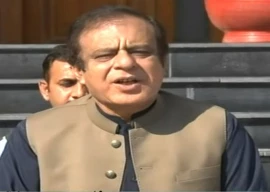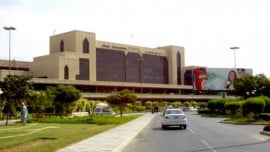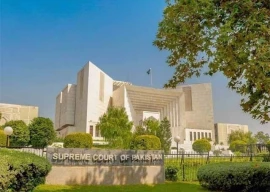
The consolidated federal and provincial budgetary document shows a half-year budget deficit of 2.1 per cent of GDP for FY2013-14, which is welcome from the point of view of fiscal austerity. However, the statistics reveals that the axe of fiscal austerity fell heavily on development expenditure. The government budgeted Rs790 billion for FY2013-14 and spent Rs243 billion in the first half of the year, which amounts to around 31 per cent of the budgeted allocation. Furthermore, the previous government spent Rs272 billion in the first half of FY2012-13. Hence, the amount spent this year is 11 per cent less compared to last year in nominal terms despite the 10-11 per cent inflation in Pakistan. These low development expenditures have an economic fallout on the following grounds:
First, a development project passes through conception, execution and implementation phases. There is a time lag that exists between conception and implementation phases. This time lag results in cost blowout issues since cost calculations are done on conservative assumptions by the conceivers of the projects. In order to achieve fiscal balances, successive regimes cut down development budgets, which can be done easily. However, the timing and pace of development projects have been brushed aside, increasing the costs of the projects manifold.
Second, development is a complicated process which requires economic mentality. What is economic mentality? It means looking at a developmental project from the perspective of a benefit-cost analysis. There is a dominance of accounting mentality in our planning and fiscal schemes. The accountants look at any feasibility from a cost perspective, leaving the benefit side of the story. They are trained to look at private returns, while economic development experts take into account social returns. From a public policy perspective, social returns should outweigh private returns.
Third, the investment-to-GDP ratio in Pakistan is hovering around 12-14 per cent since 2007-08, which is translating into a GDP growth rate of around 3.2 per cent. On top of that, average inflation over this time period is around 11.5 per cent. The private sector is not coming forward mainly due to low business confidence and for various other reasons. How can we expect foreigners to come forward and invest in Pakistan? The answer lies in the low statistics of foreign direct investment in the first six months. The current global and local economic circumstances call for state-directed capitalism. State-directed capitalism demands higher investment-to-GDP expenditure, specifically a higher development expenditure. The existing pace of low development expenditure will keep the GDP growth rate at around three per cent.
In a nutshell, development projects have a certain life cycle and are sensitive to interest rate and inflation calculations. By cutting the annual development budgets, the existing projects can get delayed and new projects cannot be started according to the conceived deadlines. The delayed projects remain semi-finished, leading to cost blowouts. As far as the case of new projects is concerned, they can have nice inaugural ceremonies without execution and implementation. Scaling down the development budget may result in short-term political gains at the expense of medium-to-long term economic loss. Hence the development budget should not become a scapegoat to achieve so-called ‘fiscal austerity’.
Published in The Express Tribune, March 5th, 2014.
Like Opinion & Editorial on Facebook, follow @ETOpEd on Twitter to receive all updates on all our daily pieces.


































1713509570-0/Taylor-Swift-Album-Release-(1)1713509570-0-270x192.webp)























COMMENTS
Comments are moderated and generally will be posted if they are on-topic and not abusive.
For more information, please see our Comments FAQ